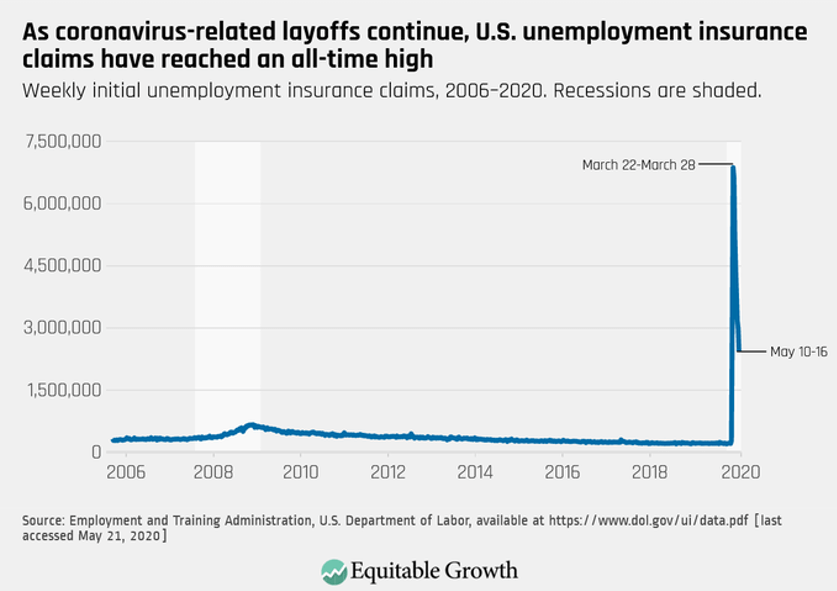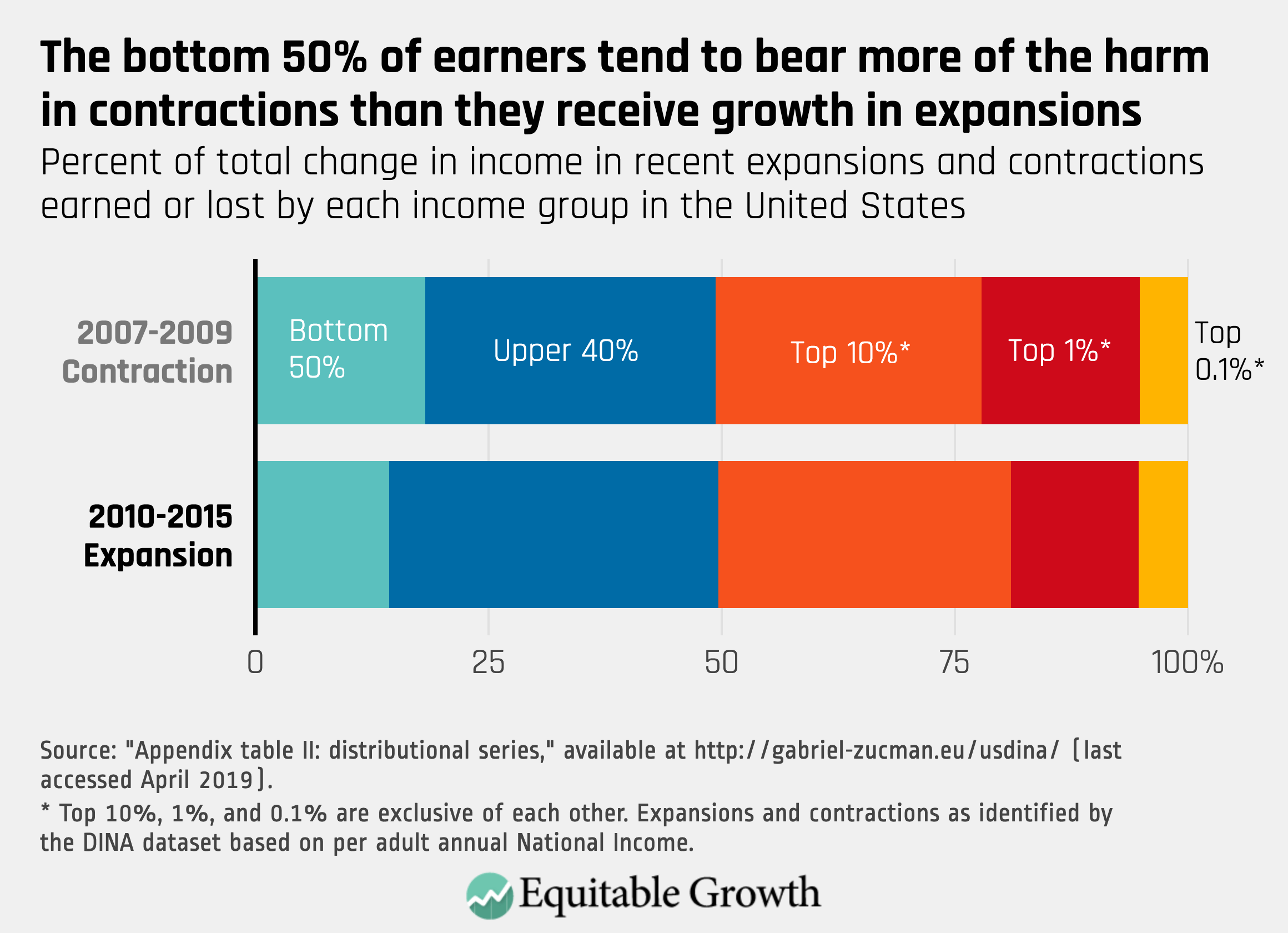
Overview
U.S. policymakers in Congress across the political spectrum, from Sen. Marco Rubio (R-FL) to Rep. Elissa Slotkin (D-MI) to Sen. Bernie Sanders (I-VT), all agree that the United States is woefully underinvested in the resilience of our supply networks, especially for medical products. This underinvestment in the past left our nation in 2020 particularly vulnerable to the new coronavirus pandemic.
To cope with the still-rolling coronavirus public health crisis and accompanying economic recession, and then to prepare the eventual economic recovery, U.S. policymakers need to plan to rebuild the U.S. production of key medical products. They then need to act on these plans to be fully prepared for the next pandemic or other public health crises. Our recommendations are in three broad categories:
- Identify and assure stable long-term U.S. demand for key medical products, including equipment, pharmaceuticals, and the key ingredients in these products’ supply chains
- Rebuild U.S. supply capabilities by investing in new equipment, the U.S. workers who need to be trained, and the supply networks that need to be built
- Promote productive investment and good jobs in medical supply chains by empowering the agencies in charge of procuring medical supplies to protect our public health with maintaining not just stockpiles but also the resiliency of the U.S. supply chains themselves
We present a range of policy ideas in each of these broad categories that we think could work to make our medical supplies network more resilient, with emblematic examples when appropriate. We also include examples of other global manufacturing supply chains that exhibit similar strains in relation to the needs of U.S. manufacturing, as well as examples of where these fragile supply chains have become more resilient due to concerted government action.
Our first key point is that our supply chain policies work best with “high-road” investment and workforce policies that strengthen our domestic supply chains, encourage innovation in production capacity alongside the development of new technologies and drugs, train a well-paid production workforce, and ensure labor, environmental, and corporate reforms strengthen rather than weaken our domestic supply chains.
Our second key point is that a concerted national effort is required to overhaul our medical supply chains to better protect U.S. public health. To ensure the three broad steps listed above and detailed below are taken by the federal government, we propose that Congress empower the U.S. Department of Health and Human Services, the Federal Emergency Management Agency, and the U.S. Centers for Disease Control and Prevention to establish these proposed reforms to secure our medical supplies. And we suggest that the U.S. Department of Commerce take the lead in helping foster a business environment conducive to the reshoring of these key parts of these supply chains.
With these broad objectives in mind, and with this broad outline of where in the federal government these comprehensive objectives should be implemented, let’s examine each of the three categories in turn.
Download File
Policy options for building resilient U.S. medical supply networks
Identify and assure stable long-term demand
Without stable long-term demand, no company will invest in building up production capacity and workers, managers and investors will not invest in the necessary skills. To achieve long-term rebuilding of our production capabilities all economic actors need to know that an elevated level of demand for domestically produced products and components is here to stay. In the medical supplies arena, the federal government should be the core provider of stable long-term demand as a public health priority.
Without this stable demand, government funding to build up supply will not be effective in maintaining resilient U.S. supply chains. Indeed, many new technologies invented in the United States using federal funding are alas no longer manufactured here in any great quantities. These include storage drives, lithium-ion batteries, liquid crystal displays, and many medical goods. That’s why government purchasing at the federal, state, and local level should have a “Made in America” component as part of a core national supply chain strategy. Here are several proposals to do so.
Coronavirus relief funding to medical supply companies and the Strategic National Stockpile
Companies involved in providing medical supplies to the U.S. healthcare industry that are given federal aid as part of the response to the coronavirus recession should be required to move a significant percentage of their sourcing and production back to the United States. This should be done in both outright procurement programs at all levels—local, state, and federal—as well as in authorizing reimbursement programs, such as Medicaid.
The Strategic National Stockpile could be another source of demand. Implementing “Made in America” requirements does not necessarily mean abrogating our obligations under World Trade Organization rules and regulations. The WTO Government Procurement Agreement prohibits local content requirements for certain negotiated types of procurement, but these prohibitions are merely “annexes” to the main accord, meaning that according to some interpretations, breaking them wouldn’t necessarily violate the main treaty itself.
These contracts with “Made in America” clauses should be for several years. Otherwise, firms would invest in fixed costs to build capability but would not have a chance to amortize these investments over time. That is, these expenses would hit their bottom line immediately, leading to a negative profit and loss without sparking long-term investments. Accordingly, without secured long-term contracts, it wouldn’t make financial sense for any company to make the needed capital investment.
Rebuild supply capabilities
Just expanding demand by itself will not instantly create a domestic supply. Firms need to invest in new equipment, workers need to be trained, and supply networks need to be built. There are many market failures in this process, and government should assist in solving them. Here are some policy ideas to spur this process.
Disclose supply network sources
It is hard to prevent vulnerabilities without knowing where they are. There are several ways that policymakers could encourage or require companies to do this. For critical medical products, Congress could require companies to disclose their supply chains, as proposed in the Strengthening America’s Supply Chain and National Security Act. This proposed law is tightly focused on pharmaceutical products. Congress should consider expanding the requirement to other products critical for domestic security as revealed by the current coronavirus pandemic, from medical devices to information technology, material science, and natural resources.
Congress then should tighten enforcement of “Buy American” executive orders and similar requirements, given the numerous waivers, exceptions, and loopholes that allow the federal, state, and local governments to purchase foreign goods without penalty. Currently, five big exceptions mean that the order is more declarative than actual. Better information can by itself be effective, as well as serve as a powerful peer-pressure mechanism—who wants to be known as the last CEO to reshore critical U.S. medical supplies? Companies are currently required to disclose any material threats to their businesses, but most have not interpreted pandemics as such a threat. That must change. Congress should mandate that the U.S. Securities and Exchange Commission require companies to publicly disclose their exposure to risks caused by public health events that the World Health Organization classifies as pandemics.
Build real options that allow production to surge
Experts and policymakers can be sure that there will be future crises, unfortunately, but they can’t know the exact future dimensions of any crisis. That’s why the federal government should stockpile some likely items in advance, such as personal protective equipment and ventilators. Concurrently, the federal government needs to mandate the building and maintenance of production capabilities flexible enough to provide what turns out to be needed. There are several ways to do this.
Increase surge capacity
Companies need incentives to maintain slack for use in an emergency since this capacity may seem to be inefficient during normal times. This slack includes buying more general equipment than companies otherwise might, planning for flexible instead of fixed production lines, maintaining the in-house capability to reprogram these production lines, and training workers more extensively so they can help design and carry out the new tasks that turn out to be necessary.
To ensure this added production capacity is ready in a crisis, the federal government could reimburse companies for the extra expenses involved in buying and maintaining this equipment. And the appropriate federal agencies could conduct periodic drills to test compliance. An unintended benefit of the U.S. and Canadian rescue of their auto industries from the Great Recession of 2007–2009 was to maintain organizational capability. Even though personal protective equipment and ventilator production is quite different from automotive manufacturing, when General Motors Corp. and Ford Motor Company began producing PPE and ventilators to help combat the new coronavirus pandemic, they were able to use their engineering and supply chain capabilities to set up production lines and quickly identify suppliers of parts and equipment; their broadly trained production workers were quickly able to learn the new jobs.
Match demand and supply
Sometimes firms use foreign sources because they are not aware of domestic sources. Apple Inc., for example, abandoned its attempt to assemble the Mac Pro in Texas in part because it couldn’t find a reliable local manufacturer of a tiny screw needed for the Mac. If the company had looked beyond Texas—say, to the Midwest—it might have been able to find a domestic source for this component.
Government at the federal, state, and local levels can mitigate these deficiencies by helping firms locate domestic suppliers. Several small programs run by federal government agencies have helped firms locate domestic suppliers. The U.S. Departments of Energy and Transportation have teamed up with the Manufacturing Extension Partnership to find domestic suppliers for firms who had requested waivers from “Buy America” policies. Or take a page from the states of Mississippi and Pennsylvania: Each looked at detailed data on components imported from abroad into their states and then introduced the firms importing the components to domestic suppliers of similar products. These programs should be expanded.
Aggregate and stabilize demand
Another issue is aggregating and stablizing demand. A key issue in the Apple case mentioned above was that before Apple decided to reshore, U.S. suppliers responded to the dramatic decline in demand for their products by selling their high-volume manufacturing equipment to China. Governments at all levels in the United States also can help match supply and demand for specialized assets and skills by convening supply chain players to develop a roadmap for products ripe for reshoring. The federal government could help by supporting and funding supply chain mapping across the medical supplies network.
China, especially Guangdong province and its leading municipalities, are world leaders in those policy efforts, and we should do well to learn from them how to continuously map product supply networks, identify critical local gaps, and devise and implement actions to close them. In the uninterupted power supply, or UPS, industry in Guangdong’s Dongguan prefecture, for example, local township officials have worked hand in hand with the local industry to ensure that there are local suppliers for up to 90 percent of the components needed for a high-end UPS system. A leading official in one of Dongguan’s townships concisely described this development strategy:
The leading company is located here because of the complete production and supplier networks we have here. It is not that we have only the final UPS companies. We have all the specialized suppliers they need. For example, there is a coordinating supplier in Tangxia that supplies all three leading UPS manufacturers. So long as we have a complete industry set there is no reason more UPS manufacturers won’t come, and no reason for these that are here to move away.
Eliminate hidden subsidies for offshoring
There are currently multiple hidden incentives for companies to offshore. Chief among them are companies engaging in regulatory arbitrage. One case in point in the pharmaceuticals industry is the current practice by the U.S. Food and Drug Administration to preannounce foreign plant inspections, giving them a regulatory advantage over domestic plants, where inspections are unannounced. The FDA should have at least as rigorous an inspection program at foreign plants as it does at domestic plants.
Another way to rebuild supply capabilities is to improve methods of purchasing medical supplies in the United States. Too often, firms and governments simply buy products that have the lowest unit costs, ignoring the possibility that the resulting supply chains might have hidden costs, such as lack of robustness or inability to innovate. The federal government should set up a Manufacturing USA Institute, perhaps hosted at the U.S. Department of Commerce, to research and improve methods of supply network sourcing and collaboration. These new methods could help ensure the diffusion of technologies developed at the other institutes, since these technologies are likely to be perceived as more expensive initially—unless prospective customers have methods to value the improved contribution these products will make.
The Manufacturing Extension Partnership, an existing federal program, could be used to improve medical supply chain production capabilities. Most small manufacturers supply larger firms, yet many of them struggle to adopt innovative practices due both to lack of economies of scale and poor purchasing practices such as those mentioned above. The Manufacturing Extension Partnership could help by working with lead firms to upgrade their suppliers’ capabilities. The MEP program is effective but pitifully small. In fiscal year 2020 ending on September 30, Congress provided funding of only $146 million—and, at the urging of Secretary of Commerce Wilbur Ross, the president has requested it receive zero funding for FY2021.
Akin to this manufacturing program are the “defense manufacturing communities” organized by the U.S. Department of Defense to ensure domestic production of key defense products and technologies. These communities “make long-term investments in critical skills, facilities, research and development, and small business support in order to strengthen the national security innovation base by designing and supporting consortiums as defense manufacturing communities.” This blueprint could be applied to other products, including medical products manufacturing organized by the U.S. Economic Development Agency within the U.S. Department of Commerce. A new bipartisan bill, the Endless Frontiers Act, introduced by Sens. Chuck Schumer (D-NY) and Todd Young (R-IN), proposes to do just that.
Protect U.S. infant industries and secure their supply chains in the country
The last, but by no means least, important recommendation is for policymakers to craft legislation to protect infant industries in the United States. The United States currently runs a large trade deficit in even its most advanced technologies because start-up companies invented within U.S. universities often move abroad almost as soon as they have viable prototypes of their new technologies.
This is especially critical in cases where both new production technologies and new products that are based on them are developed. Too many times, infant U.S. companies find that they are unable to perfect the new production technologies in the United States and instead “dumb down” their products, so they can be produced using the old technologies and, hence, offshored to China. An interesting, and sadly only too common, example is optoelectronics, where, between 2010 to 2013, due to the inability of financing fabrication facilities utilizing the new integrated production methods, the United States lost a 10-year lead to the Chinese.
Policy reforms that would allow for the building of shared production assets could allow new inventions that include U.S. production upgrades to jump over this valley of death. Knowing the availability of infant industry protection measures, by itself, will change the investment and development rationale of entrepreneurs and their financiers. And once one company opens the first state-of-the-art production facility in the United States and develops a resilient supply chain with sufficient U.S. domestic sourcing, the costs for its followers will be significantly lower because of economies of scale, learning, and downward sloping cost curves.
Further, since the new facilities in the United States will be built to scale using the latest technology, their yield and productivity will be second to none. And with American ingenuity to follow, unit costs will continue to come down. One historical example of this strategy in action is the production of bombers in the United States during World War II, where one study finds that “every doubling of cumulative output gives rise to 27.9 percent decline in the unit direct labor hours.” A similar approach to the national security threats posed by the coronavirus pandemic could well yield similar results.
Promote productive investment and good jobs in medical supply chains
The proposals presented above would work best in partnership with firms organized around productive investment and skilled, well-paid workers. Uncertainty about future pandemics and other potential disasters makes even more valuable the ability to innovate and rapidly shift to new products in the United States. Firms that focus on long-term investments in their workers and in new equipment and ways of working offer a better return on taxpayers’ investment than do firms that focus on short-term financial metrics and rewarding top executives.
Past U.S. policies unfortunately produced counterexamples, such as contracts to produce ventilators that did not yield ventilators available to U.S. hospitals, due to anticompetitive behavior by the largest corporations. Case in point: One small company, Newport Medical Instruments, which received a contract to manufacture ventilators, was bought by Covidien, and Covidien was bought, in turn, by Medtronic PLC, which made competing products and so stalled the U.S. government contract.
Similarly, U.S. firms have spent so much on stock buybacks that they had little cushion to weather a crisis. By 2019, stock buybacks reached $1 trillion and have become so prevalent that there is no sector in which their size did not dwarf their productive investment. Thus, stock buybacks have now become a significant vulnerability and obstacle to reshoring U.S. production.
On the labor side of the equation, too, there is need for reform. U.S. workers are nearly always left out of such key decision-making at corporations about the location of the production of medical products—and now, about the priority given to providing them access to personal protective equipment—in contrast to their European counterparts. Thus, it is germane to give workers a say in not just coronavirus-related decision-making at their companies, but also supply chain decisions through mandated works councils and elected health and safety committees.
An effective way to deal with many of these issues is the one pioneered in Israel by the Israeli Innovation Authority (formerly the Office of the Chief Scientist). This agency stipulates that any intellectual property generated by the nation’s IIA grants, which are given to R&D projects aiming to come up with new exportable products in all sectors of the economy, is not allowed to leave the country without paying a hefty fine (six times the amount of the grant). This measure, in effect, ensures that production commences in Israel, even if the grantee is a fully owned subsidiary of a foreign multinational corporation.
Corporate governance is another key area in need of reform to promote productive investments and jobs, not just in the medical supplies arena but across the broader U.S. economy too. Our ideas presented above would be much more effective if implemented along with some broader reforms. In the past, much taxpayer money has been siphoned off by shareholders and top management of firms rather than being used for productive investment or paying worker salaries. Thus, limits on the financialization of firms and measures to empower workers as productive stakeholders can ensure effective use of citizens’ dollars.
We would thus suggest policies such as these for firms that receive government aid to help improve the resiliency of their supply chains:
- Limits on stock buybacks and executive compensation
- Establishment of works councils in large firms and elected health and safety committees
- Renewed antitrust enforcement
- Pledges of neutrality in union elections at government contractors
- Requiring government contractors to obey laws, including labor laws
Conclusion
The still-deepening coronavirus recession brutally exposes our national weaknesses. The task in front of policymakers is difficult and will take years to bear fruit. Yet policymakers can help power an economic recovery and ensure that the next crisis will not find our nation so vulnerable. The federal government can do so by enacting policies that spark new sources of demand for medical supplies, create new domestic sources of supply for those medical supplies, launch workforce training to ensure well-trained workers are available, and enforce equitable labor, environmental, and corporate reforms. A national effort is needed.
Collective national action can make the difference because a crisis of this magnitude requires government action. It is time for the federal government to invest in American ingenuity and give U.S. workers the chance to show the world what its people are capable of making, innovating, and producing.
—David Adler is co-editor of the anthology “The Productivity Puzzle” published by the CFA Institute Research Foundation and the author of related works. Dan Breznitz is the Munk Chair of innovation studies and the co-director of the Innovation Policy Lab at the Munk School of Global Affairs & Public Policy and Political Science at the University of Toronto. Susan Helper is is the Frank Tracy Carlton Professor of economics at the Weatherhead School of Management at Case Western Reserve University. Breznitz and Helper also are co-directors of Canada-based CIFAR’s Innovation Equity and the Future of Prosperity Program.










